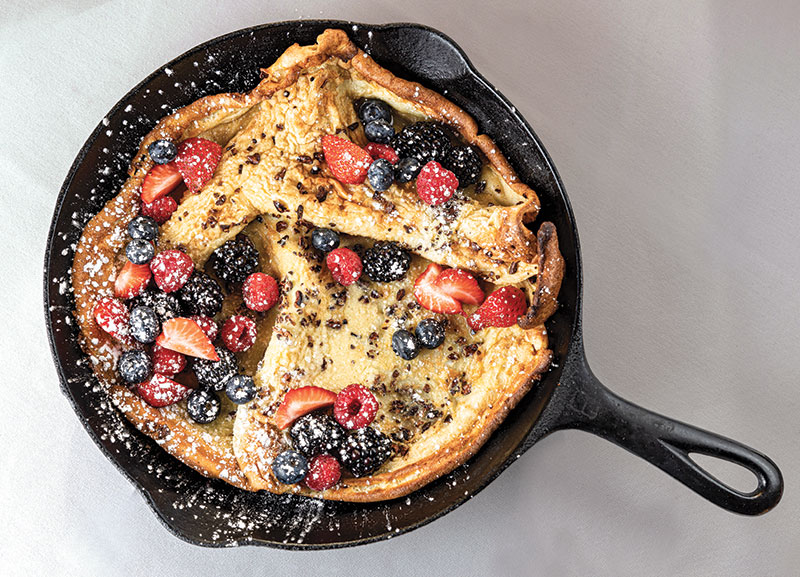
What is the fastest, easiest, most impressive breakfast dish you can think of? Something you don’t do very often? Something that looks like you tried? Something that you can make with whatever you have in the pantry? I ask myself this question for Valentine’s Day. Well—Dutch baby to the rescue!
At its most simple, a Dutch baby is a puffy pancake that comes together in a few minutes and bakes in less than 15. Actually, it’s much easier and less time consuming than regular pancakes. It can be flavored or garnished with just about anything sweet or savory—a “bespoke breakfast” so to speak—tailored to the favorite flavors of your loved one(s). The original was garnished simply with powdered sugar and a squeeze of fresh lemon juice. The Dutch baby isn’t actually Dutch, but is closely related to the British Yorkshire pudding, French crepes and clafoutis, German pfannkuchen, and Middle European palacinka. Despite its international pedigree, the easily recognized form we know today was codified in the early 1900s here in America, popularized by The New York Times decades ago, and is now seen regularly in cafes and restaurants around the world.
I still remember the first Dutch baby I tasted almost 25 years ago at the home of a well-known pastry chef in Berkeley, California. It was a bit more dense and eggy than the pancakes I was accustomed to, and it was drizzled with chestnut honey. I was served a slice but unfortunately did not witness the irregular ballooning pillow when it came out of the oven. It deflates in seconds, so those not in the immediate vicinity don’t experience the same thrill as those within close viewing range. It was memorable nonetheless.
The fundamental recipe is so simple I can sum it up in one sentence: Whisk together milk, flour, sugar, eggs, and a pinch of salt, pour the mixture into a preheated cast-iron skillet and bake. The joy in making the Dutch baby, however, is in manipulating the details and personalizing it, so here is a more enlightening version of the recipe (with notes on special variations at the end).
The Basic Baby (and how to make it your own)
Begin by preheating the oven to 425F. Put a 10-inch cast-iron skillet in the oven while it preheats. Other bake-proof vessels will work, but cast iron is ideal. Meanwhile, assemble the ingredients.
For the batter, combine ½ cup milk, ½ cup all-purpose flour, two to three large eggs, and a pinch of salt in a bowl. I prefer three eggs for the volume, but two makes a lighter, less eggy cake. Whether or not you use sugar depends on whether you are making a sweet or savory baby, so if you do want it sweet, you can add up to ¼ cup sugar. That being said, all of the ingredients in this recipe can be fudged a little either up or down, or with substitutions. Next, whisk the mixture together for a minute or two until you have achieved a relatively smooth batter. There is a contingent of cooks that likes to mix the batter in a blender or food processor, some specifically mixing just the eggs for a minute. I find this technique simply results in more dirty dishes, especially if you are adding garnishes which need to be folded in (which you have to do in a bowl). Also note that the baby tends to puff much better when the ingredients aren’t cold, so if you think about it, take the eggs out of the fridge the night before.
When the oven is fully heated and the skillet is hot, remove it from the oven, drop in a few (two to four) tablespoons butter and swirl the skillet (mind the scorching-hot handle) until the butter is melted, then pour in the mixture. I made the Dutch baby in the photo with a small handful of cocoa nibs (see In the Pantry for details) sprinkled on top right before baking. Immediately place the baby in the oven and leave it undisturbed for about 12 minutes. Give it a peek and a poke to make sure it is fully cooked, returning it to the oven if there are any fluid bits. If it’s fully cooked, and you have toppings or garnishes for the puffed cake, distribute them equitably and serve immediately. To make the most of the Dutch baby drama, everything should be ready for its presentation. Whether you’re dining at table, kitchen counter, or in bed, coffee should already be poured, plates, silverware, a garnish of fresh berries and any condiments like syrup or hot sauce at hand. If you hurry from oven to table, your beloved can marvel at your momentarily fluffy, puffy labor (almost) of love.
Notes on Variations
Dutch babies aren’t just for breakfast or brunch. They make perfectly respectable lunches, dinners, or desserts as well. Here are a few thoughts on how to vary your baby.
- For a chocolate baby, you can substitute cocoa powder for about half of the flour, but I find it yields a heavier, almost brownie-like baby. Another solution could be adding a handful of your favorite kind of chocolate chips, drizzling with chocolate sauce, or sprinkling with cacao nibs. The nibs are more subtle with their chocolate flavor and add a bit of texture. This variation definitely needs sugar, and could be lovely—and over the top—with a scoop of your favorite ice cream.
- Keep in mind that if you are serving the Dutch baby with sauces or garnishes that require cooking first (for example, a ragu of asparagus and mushrooms or a cheese sauce), those need to be completed (or almost completed) before the baby goes into the oven. The garnishes could be prepared the day before, or even be leftovers from a previous meal. You could also preheat the skillet by cooking any toppings that need it, then adding them to the base mixture.
- Vanilla, or other flavorings, extracts, herbs and spices make great additions to the batter, just try to use a delicate hand when adding them—Dutch babies are fragile. Maple syrup and fruit preserves, maybe a dollop of yogurt or whipped cream, all make simple and delicious toppings.
- Out of curiosity, I made one substituting gluten-free flour, coconut milk, honey, and avocado oil and it performed quite well. Actually, it was pretty tasty and had the same dramatic puff plus a hint of crunch from the GF flour.
- This size recipe serves two to four people. For a larger group, you could double the ingredients and bake in two skillets or one 9×12 rectangular baking dish (which would make it a Double Dutch baby). Baking tiny individual babies in well-greased muffin tins results in what is basically a Yorkshire pudding.
- This baby is best eaten warm, but I noticed that over the course of a few hours my recipe testing scraps magically disappeared, so it must be at least edible at room temperature.
In Your Pantry
Cacao to Cocoa
Looking for the right cocoa for your next chocolate project? The selection and names can be a little confusing. Cacao/cocoa comes in many forms that although similar, are not necessarily interchangeable. The cacao tree seed pod is first dried and fermented then manipulated in different ways to achieve the chocolate products we love.
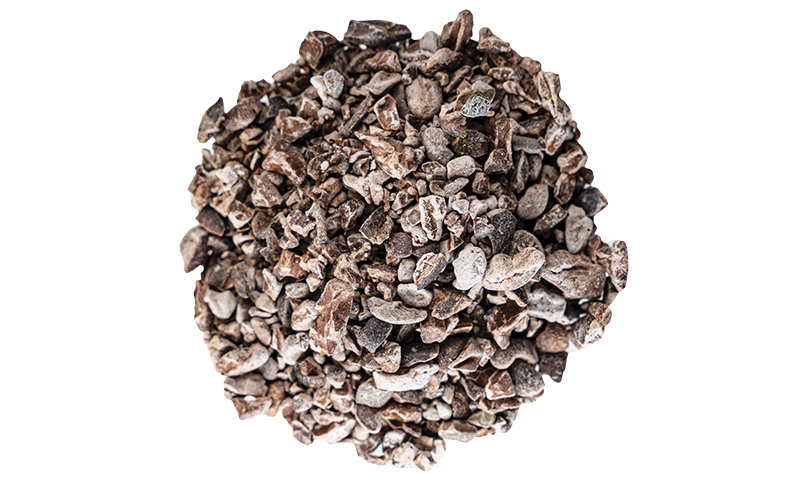
Cacao Nibs
Dried and fermented cacao beans are crushed and ground into tiny pieces or nibs, sometimes left raw, sometimes roasted, and have a firm but slightly chewy texture. There is no sugar added and the flavor is pleasantly intense. To tame the bitterness and enhance flavor and crunch, toast the nibs briefly in a dry skillet. Temperature during storage can vary the color from dark to almost frosted bloom. Add to chocolate chip cookies to turn up the flavor and texture, sprinkle in pancakes or cereal, or add to savory sauces for bitter-chocolatey complexity.
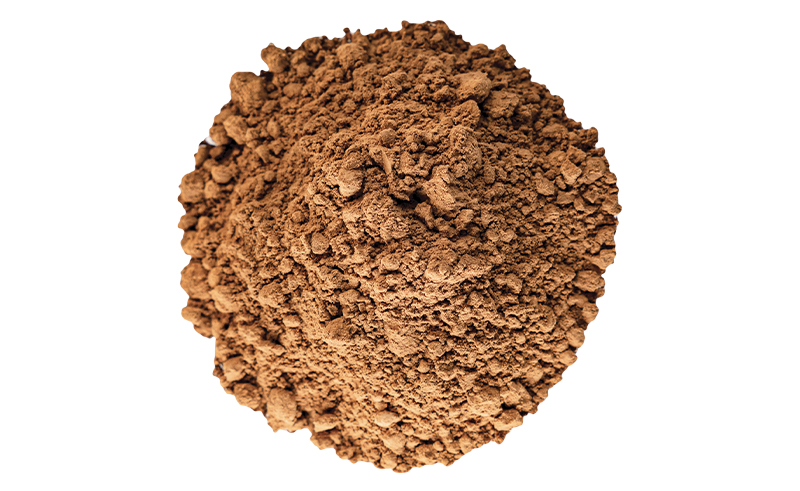
Cocoa
When cacao nibs are ground to a powder, they become natural cocoa powder. Natural cocoa is light brown with a strong, pronounced chocolate flavor. It is slightly acidic, a quality used to activate the leavening in many recipes, and is best to use in recipes calling for baking soda. It is very high in antioxidants. Hershey’s and Nestle are common brands.
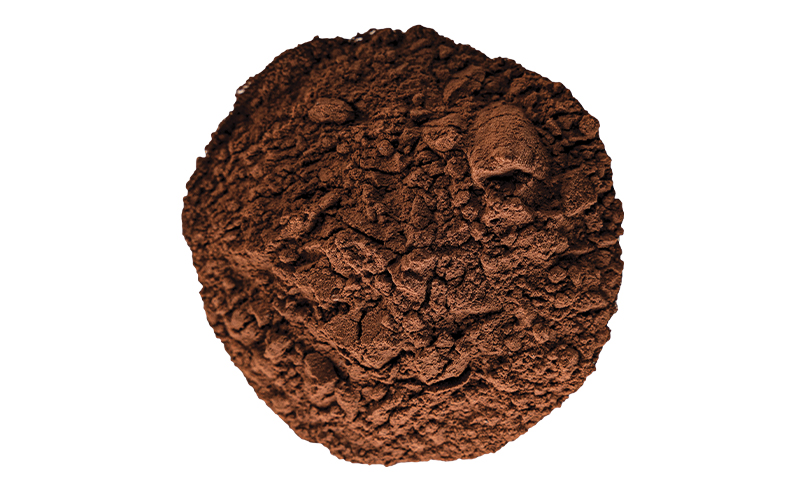
Dutch Processed Cocoa
When natural cocoa is bathed in an alkaline solution (the process known as Dutching) it becomes darker in color, less acidic, and milder in flavor. Because of its lower acidity, it is recommended for use in baking in recipes that use baking powder. It’s more mellow flavor makes it the best cocoa for sprinkling on your next chocolate mousse or tiramisu.
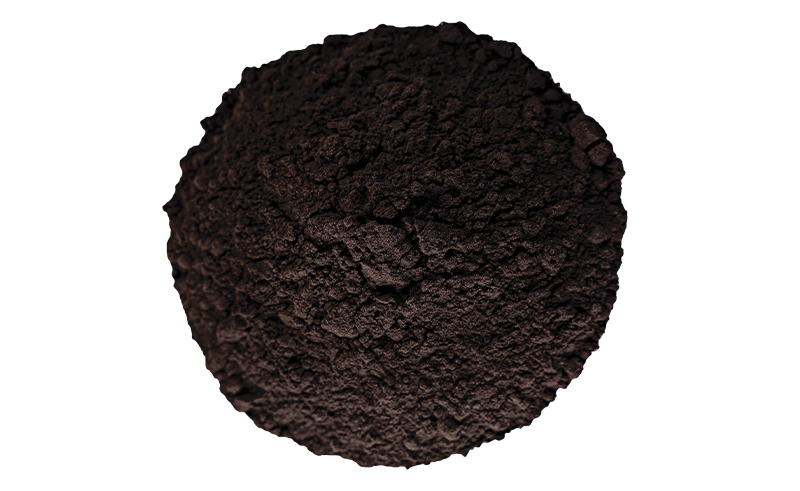
Black Cocoa
When cocoa powder is heavily Dutched (highly alkalized), it turns jet black and its flavor becomes milder. It is often used as a coloring agent (think Oreos) and is useful in cooking when deep, dark coloring is desired. Pastry chefs often use it to make black buttercream or make richer looking chocolate ice creams, mousses, and sauces. (The color change takes a day or two to fully happen, so plan ahead for the deepest color.) Not suggested as a substitute for natural cocoa when baking because of its low acidity.


